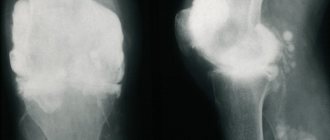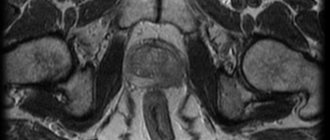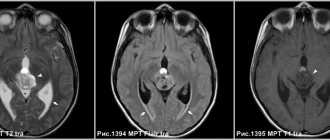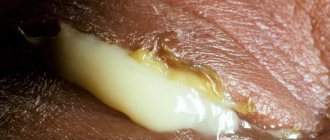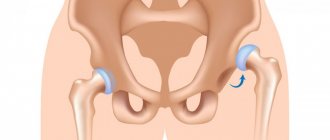Hydropericardium - what is it?
Hydropericardium is an abundant accumulation of fluid in the heart sac. This bag itself consists of two leaves surrounding the heart. Their task is to protect it and separate it from other organs. Fluid accumulates in the middle of the sac (called the pericardium). Its amount is insignificant, and it is designed to prevent friction of the walls of the bag against each other, as well as the heart. For normal conditions, the leaves are 3-5 millimeters apart from each other, the amount of accumulated liquid is up to 50 milligrams.
If there is too much fluid, it prevents the heart from working normally, which can lead to cardiac tamponade and cardiac arrest.
The disease we are talking about dramatically increases the amount of natural fluid in the heart sac by several times. If the natural amount of liquid mass ranges from 15 to 50 milligrams, then in a pathological condition this amount can be over a liter. In addition, when pathology develops, blood or lymph enters the bag.
Causes
What causes the disease? Let's start with a description of the mechanism of normal functioning. So, the fluid is produced by the pericardial cells, and they also absorb it. That is, there is a natural control of the amount of fluid, as well as its renewal. When one of these processes is disrupted, hydropericardium occurs.
The causes of the disease are very different:
- Pericarditis;
- Heart failure;
- Renal failure of a chronic nature;
- Heart defects;
- Post-infarction state;
- Hypothyroidism;
- Rheumatoid arthritis;
- Infections;
- Chest injuries;
- Allergic reactions;
- Insufficient protein levels;
- Cancer and other neoplasms;
- Intoxication, etc.
Bone pain due to cancer
As a rule, the disease belongs to the category of secondary pathologies, which must be taken into account when diagnosing and prescribing treatment. That is, it is very important to find the true cause that led to the development of the disease.
What causes hydropericardium to develop in cancer?
The causes of hydropericardium are as follows: increased production of transudate or slower absorption. A similar pathophysiological mechanism is observed in many diseases:
- Chronic heart failure - a condition characterized by congestion.
- Other cardiovascular diseases: pericarditis, cardiomyopathy, congenital heart defects.
- Intoxication with pesticides (in hazardous industries), decaying cancer cells.
- Cachexia. In extreme cases of exhaustion, the heart decreases in size and the organ does not completely fill the pericardial cavity.
- Chronic kidney disease. With hydronephrosis, renal failure, pyelonephritis, acid-base metabolism and water-salt metabolism are disrupted, which provokes the development of edema of internal organs.
- Severe anemia - disruption of cellular respiration processes leads to the formation of excess effusion.
- Trauma is a common cause of cardiac tamponade (compression of the heart muscle by excessive effusion).
- Radiation therapy for oncopathology.
- Benign or malignant neoplasms of the mediastinum.
There are special forms of hydropericardium in which lymph accumulates (a common occurrence in the metastatic process) or blood (heart injury, complicated myocardial infarction).
Classification
The classification is based on the main aspect - the amount and type of accumulated fluid.
Taking into account the amount of fluid in the heart sac and the distance between its leaves, they speak of three stages of the disease:
- Early stage. The amount of accumulated liquid does not exceed 100 ml, the distance between the sheets is from 6 to 10 mm;
- Moderate stage. The accumulated liquid is in the range of 100 - 500 ml, the sheets have separated by 10-20 mm;
- Expressed stage. Water mass > 500 ml, sheets separated by more than 20 mm.
As you can see, an increase in the amount of accumulated fluid increases not only the manifestation of symptoms, but the risk to health and life.
The quality of the accumulated liquid is also important. There can be several types, it is important to know this to make a diagnosis:
- Accumulated natural fluid is a diagnosis of “hydropericardium”;
- Accumulation of fluid with blood - “hemopericardium”;
- Accumulation of lymphatic fluid - “chelopericardium”;
- Accumulated pus and inflammation are called “pericarditis.”
Pericarditis
Pericarditis is an inflammatory disease of the tissue lining of the heart (pericardium), of an infectious or non-infectious nature.
The pericardium consists of outer and inner layers, between which normally there is a small amount of fluid. Fluid is needed to ease friction during contraction of the heart muscle. Pericarditis can act as an independent isolated disease or be a complication of diseases of other organs and systems.
Causes of pericarditis development
- infectious (bacteria, viruses, fungi, protozoa, etc.),
- non-infectious (allergic diseases, systemic connective tissue diseases, some blood diseases, metabolic disorders, injuries, exposure to radiation, treatment with certain hormonal drugs, cancer).
There are idiopathic pericarditis (cases of pericarditis where the cause of inflammation cannot be determined). In the development of pericarditis, changes in the composition or amount of pericardial fluid under the influence of the above factors play an important role.
Symptoms of pericarditis Symptoms of pericarditis are cardiac and general, the degree and severity of symptoms depend on the form and stage of the disease. The main cardiac symptom is heart pain, felt in 90% of cases. The pain is usually localized behind the sternum or in the left half of the chest, and can radiate to the left arm. The intensity of pain varies: from almost imperceptible to extremely acute, heart attack-like. The nature and intensity of pain varies depending on the position of the body. The pain decreases when lying on the right side with the legs pulled up to the chest, or when bending forward. This happens because in this position, when the heart contracts, the inflamed walls of the heart sac come into less contact. The pain intensifies when coughing, taking a deep breath, or lying on your back. With some types of pericarditis there may be no pain at all. Another common symptom is the appearance of circulatory failure (shortness of breath on exertion and at rest, edema). Common symptoms include:
- weakness;
- sweating;
- fatigue, lack of or decreased appetite;
- elevated temperature.
If pericarditis has developed as a complication of another disease, symptoms of damage to other organs and systems may be present in the foreground.
Types and forms of pericarditis
- Acute pericarditis – up to 1-2 months from the onset of the disease. Types of acute pericarditis: exudative (effusive), fibrinous (dry).
- Subacute pericarditis – from 2 to 6 months from the onset of the disease. Types of subacute pericarditis: exudative (effusion); adhesive (sticky); constrictive (squeezing).
- Chronic pericarditis – more than 6 months from the onset of the disease. Types of chronic pericarditis: exudative (effusion); adhesive (sticky); constrictive (squeezing); compressive pericarditis with calcification (“shell heart”).
Exudative pericarditis. As a result of the inflammatory process, a large amount of fluid accumulates in the pericardial cavity. The fluid may contain various cellular elements and substances, depending on their presence, exudative pericarditis is divided into several subtypes (purulent, hemorrhagic, uremic, etc.). If the effusion accumulates very quickly, the outer layer of the pericardium does not have time to stretch, compression of the heart chambers occurs, cardiac output drops sharply, and acute cardiovascular failure develops. This process is called cardiac tamponade. Cardiac tamponade is a life-threatening condition that requires emergency hospitalization and treatment. If fluid accumulates slowly in the pericardial cavity, the outer layer of the pericardium has time to stretch, without compression of the walls of the heart and disruption of its functioning. More than 1 liter of fluid can accumulate in the pericardial cavity. An enlarged cardiac sac sometimes interferes with the normal functioning of nearby organs (esophagus, trachea, lungs, recurrent nerve), which is manifested by swallowing disorders, cough, hoarseness and other symptoms.
Fibrinous pericarditis. Fluid (inflammatory effusion) containing fibrinogen forms in the pericardial cavity. Some of the fluid is sucked out through the lymphatic vessels, but fibrin fibers settle on the leaves of the cardiac sac, limiting their movement.
Adhesive pericarditis. With adhesive pericarditis, as a result of the inflammatory process, connective tissue grows on the pericardial layers, forming adhesions.
Constrictive pericarditis. With constrictive pericarditis, as a result of the inflammatory process, the entire cavity of the heart sac is filled with scar tissue, causing compression of the heart chambers and impairing the function of the heart.
Compressive pericarditis with calcification (“shell heart”). With an “armored” heart, as a result of the inflammatory process, the pericardial layers become denser, welded together, and calcium is deposited in them. A rigid and inactive cardiac sac disrupts the functioning of the heart.
Diagnosis and treatment of pericarditis Pericarditis is a very “cunning” disease, due to its non-specific, in the eyes of a layman, symptoms and “disguise” as some other diseases.
If pericarditis is suspected, consultation with a cardiologist is mandatory. With asymptomatic or minimally symptomatic pericarditis, diagnosing the disease is difficult. The key to correct and effective treatment is high-quality diagnostics. It is very important to carry out all the necessary research as quickly as possible. You may need:
- blood test (clinical, biochemical, immunological) – whether there are signs of inflammation in the blood;
- ECHO KG (ultrasound of the heart) - the amount of fluid in the pericardial cavity is visible;
- ECG;
- radiography;
- CT scan of the chest;
- in some cases, diagnostic puncture or biopsy of the pericardium.
Additional tests are often prescribed to clarify the causes of pericarditis. Only an experienced doctor can correctly interpret the examination results and develop a treatment regimen. With proper, timely treatment, the prognosis is usually favorable. Treatment methods for pericarditis are very different and depend on its nature, course, and concomitant diseases. Treatment can be either medicinal or surgical (pericardial puncture, pericardial biopsy, surgical treatment of scars).
Symptoms
The volume of accumulated transudate fluid at an early stage of pathology is <100 mil. If the indicator increases, then most likely we are talking about the beginning of the inflammatory process.
At the early stage, there are practically no external symptoms, but at subsequent stages they can be as follows:
- Profuse sweating;
- Pain in the chest, worsening when bending forward;
- General weakness;
- Pale skin;
- Manifestations of tachycardia;
- Rapid shallow breathing;
- Swelling in the legs.
Further development of the disease entails the appearance of new symptoms simultaneously with a decrease in blood pressure.
An extreme complication of the pathology is the development of cardiac tamponade. It manifests itself when the heart is strongly compressed by fluid accumulations, during which normal contractions of the organ are impossible.
Symptoms of tamponade:
- Severe weakness;
- Increasing shortness of breath;
- Fear of death.
This condition requires an immediate visit to the doctor.
Possible complications
The development of complications of hydropericardium is associated with the severity of heart failure.
An increase in the volume of pathological effusion to 1-1.5 liters provokes an increase in symptoms: pressure numbers decrease, shortness of breath worsens, and swelling becomes more noticeable. Advanced hydrocele of the heart leads to the development of tamponade, in which accumulated fluid compresses the heart muscle so much that physiological contractions become impossible. The clinical picture of the condition is accompanied by a pronounced loss of strength, weakness, attacks of suffocation with frequent shallow breathing, a feeling of rapid heartbeat, and episodes of loss of consciousness. In such a case, emergency medical attention is required.
Diagnostic measures
Diagnosis begins with examination and history taking.
The following are applicable as instrumental research:
- Chest X-ray - reveals a significant increase in fluid volume;
- X-ray kymography – records pulsations of the heart and great vessels;
- Echocardiography is the main technique used to identify pathology;
- Diagnostic puncture of the pericardium - allows you to determine the type of accumulated fluid.
For a more in-depth study, blood and urine tests are necessary; ultrasound examinations of the pelvis, abdominal cavity, and other studies are possible.
Treatment methods in Medscan
Patient management tactics at the Medscan clinic are based on international protocols. An individual treatment regimen is drawn up for each patient. Treatment of hydropericardium depends on the amount of accumulated fluid, as well as echocardioscopy (ultrasound of the heart).
Based on the results of laboratory and instrumental studies, the doctor makes appropriate prescriptions.
First of all, specialists pay attention to the underlying pathology (oncological process), which provoked the complication. In parallel with cancer treatment, hydropericardium is combated. It begins with the use of diuretics (diuretics), which “unload” the blood circulation and remove excess fluid.
A significant amount of effusion is observed when a combination of transudate and exudate (produced during inflammation) requires a therapeutic puncture of the pericardium.
